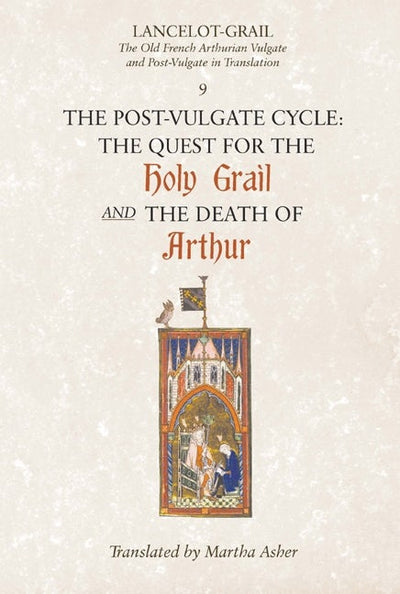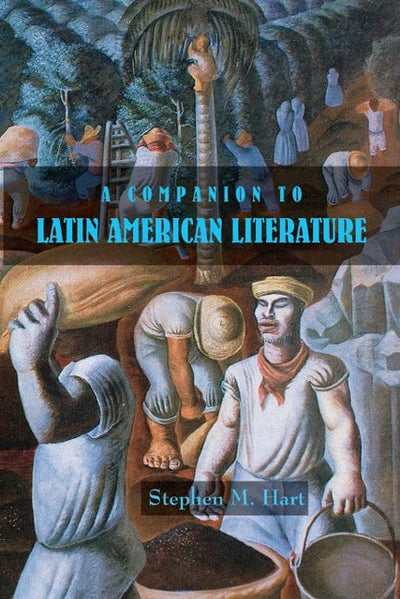You may also like
Roger Southall
Whites and Democracy in South Africa
Regular price $26.99 Save $-26.99
Key book in Whiteness Studies that engages with the different ways in which the last white minority in Africa to give way to majority rule has adjusted to the arrival of democracy and the different modes of transition from "settlers" to "citizens".
How have whites adjusted to, contributed to and detracted from democracy in South Africa since 1994? Engaging with the literature on 'whiteness' and the current trope that the democratic settlement has failed, this book provides a study of how whites in the last bastion of 'white minority rule' in Africa have adapted to the sweeping political changes they have encountered. It examines the historical context of white supremacy and minority rule, in the past, and the white withdrawal from elsewhere on the African continent. Drawing on focus groups held across the country, Southall explores the difficult issue of 'memory', how whites seek to grapple with the history of apartheid, and how this shapes their reactions to political equality. He argues that whites cannot be regarded as a homogeneous political grouping concluding that while the overwhelming majority of white South Africans feared the coming of democracy during the years of late apartheid, they recognised its inevitability. Many of their fears were, in effect, to be recognised by the Constitution, which embedded individual rights, including those to property and private schooling, alongside the important principle of proportionality of political representation. While a small minority of whites chose to emigrate, the large majority had little choice but to adjust to the democratic settlement which, on the whole, they have done - and in different ways. It was only a small right wing which sought to actively resist; others have sought to withdraw from democracy into social enclaves; but others have embraced democracy actively, either enthusiastically welcoming its freedoms or engaging with its realities in defence of 'minority rights'. Whites may have been reluctant to accept democracy, but democrats - of a sort - they have become, and notwithstanding a significant racialisation of politics in post-apartheid South Africa, they remain an important segment of the "rainbow", although dangers lurk in the future unless present inequalities of both race and class are challenged head on.
African Sun Media: South Africa
How have whites adjusted to, contributed to and detracted from democracy in South Africa since 1994? Engaging with the literature on 'whiteness' and the current trope that the democratic settlement has failed, this book provides a study of how whites in the last bastion of 'white minority rule' in Africa have adapted to the sweeping political changes they have encountered. It examines the historical context of white supremacy and minority rule, in the past, and the white withdrawal from elsewhere on the African continent. Drawing on focus groups held across the country, Southall explores the difficult issue of 'memory', how whites seek to grapple with the history of apartheid, and how this shapes their reactions to political equality. He argues that whites cannot be regarded as a homogeneous political grouping concluding that while the overwhelming majority of white South Africans feared the coming of democracy during the years of late apartheid, they recognised its inevitability. Many of their fears were, in effect, to be recognised by the Constitution, which embedded individual rights, including those to property and private schooling, alongside the important principle of proportionality of political representation. While a small minority of whites chose to emigrate, the large majority had little choice but to adjust to the democratic settlement which, on the whole, they have done - and in different ways. It was only a small right wing which sought to actively resist; others have sought to withdraw from democracy into social enclaves; but others have embraced democracy actively, either enthusiastically welcoming its freedoms or engaging with its realities in defence of 'minority rights'. Whites may have been reluctant to accept democracy, but democrats - of a sort - they have become, and notwithstanding a significant racialisation of politics in post-apartheid South Africa, they remain an important segment of the "rainbow", although dangers lurk in the future unless present inequalities of both race and class are challenged head on.
African Sun Media: South Africa

Emily Kesling
Medical Texts in Anglo-Saxon Literary Culture
Regular price $29.99 Save $-29.99
Winner of the Best First Monograph from the International Society for the Study of Early Medieval England (ISSEME) 2021.
An examination of the Old English medical collections, arguing that these texts are products of a learned intellectual culture.
Four complete medical collections survive from Anglo-Saxon England. These were first edited by Oswald Cockayne in the nineteenth century and came to be known by the names Bald's Leechbook, Leechbook III, the Lacnunga, and the Old English Pharmacopeia. Together these works represent the earliest complete collections of medical material in a western vernacular language.
This book examines these texts as products of a learned literary culture. While earlier scholarship tended to emphasise the relationship of these works to folk belief or popular culture, this study suggests that all four extant collections were probably produced in major ecclesiastical centres. It examines the collections individually, emphasising their differences of content and purpose, while arguing that each consistently displays connections with an elite intellectual culture. The final chapter considers the fundamentally positive depiction of doctors and medicine found within literary and ecclesiastical works from the period and suggests that the high esteem for medicine in literate circles may have favoured the study and translation of medical texts.
An examination of the Old English medical collections, arguing that these texts are products of a learned intellectual culture.
Four complete medical collections survive from Anglo-Saxon England. These were first edited by Oswald Cockayne in the nineteenth century and came to be known by the names Bald's Leechbook, Leechbook III, the Lacnunga, and the Old English Pharmacopeia. Together these works represent the earliest complete collections of medical material in a western vernacular language.
This book examines these texts as products of a learned literary culture. While earlier scholarship tended to emphasise the relationship of these works to folk belief or popular culture, this study suggests that all four extant collections were probably produced in major ecclesiastical centres. It examines the collections individually, emphasising their differences of content and purpose, while arguing that each consistently displays connections with an elite intellectual culture. The final chapter considers the fundamentally positive depiction of doctors and medicine found within literary and ecclesiastical works from the period and suggests that the high esteem for medicine in literate circles may have favoured the study and translation of medical texts.

Norris J. Lacy, Martha Asher
Lancelot-Grail: 9. The Post-Vulgate Cycle. The Quest for the Holy Grail and The Death of Arthur
Regular price $36.95 Save $-36.95
The revised version of The Quest of the Holy Grail gives a greater role to Perceval, and introduces a number of knights not found in the Vulgate; but the largest change is that much of the story of Tristan (and of his rivalPalamedes) is incorporated into the story. The achievement of the Grail quest centres on Galahad's healing of Pellehan, which has to be accomplished before the knights can reach the Grail itself. The Death of Arthur is little more than a relatively brief postscript, bringing the story of the adventures of the kingdom of Logres to an end; Lancelot and Guenevere are revealed as lovers, and Arthur fights both Lancelot and then the Romans. Despite thisvictory, he is betrayed and killed by Mordred, as has been foreshadowed from the outset of the new material. The romance ends with king Mark of Cornwall's death when he attempts to kill Lancelot and Bors at the hermitage to whichthey have retreated. For a full description of the Post-Vulgate Cycle see the blurb for the complete set.

Stephen M. Hart
A Companion to Latin American Literature
Regular price $36.95 Save $-36.95
The evolution of Latin American literature.
A Companion to Latin American Literature offers a lively and informative introduction to the most significant literary works produced in Latin America from the fifteenth century until the present day. It shows how the press, and its product the printed word, functioned as the common denominator binding together, in different ways over time, the complex and variable relationship between the writer, the reader and the state. The meandering story of the evolution of Latin American literature - from the letters of discovery written by Christopher Columbus and Vaz de Caminha, via the Republican era at the end of the nineteenth century when writers in Rio de Janeiro as much as inBuenos Aires were beginning to live off their pens as journalists and serial novelists, until the 1960s when writers of the quality of Clarice Lispector in Brazil and García Márquez in Colombia suddenly burst onto the world stage- is traced chronologically in six chapters which introduce the main writers in the main genres of poetry, prose, the novel, drama, and the essay. A final chapter evaluates the post-boom novel, testimonio, Latino and Brazuca literature, gay, Afro-Hispanic and Afro-Brazilian literature, along with the Novel of the New Millennium. This study also offers suggestions for further reading.
STEPHEN M. HART is Professor of Hispanic Studies, UniversityCollege London, and Profesor Honorario, Universidad de San Marcos, Lima
A Companion to Latin American Literature offers a lively and informative introduction to the most significant literary works produced in Latin America from the fifteenth century until the present day. It shows how the press, and its product the printed word, functioned as the common denominator binding together, in different ways over time, the complex and variable relationship between the writer, the reader and the state. The meandering story of the evolution of Latin American literature - from the letters of discovery written by Christopher Columbus and Vaz de Caminha, via the Republican era at the end of the nineteenth century when writers in Rio de Janeiro as much as inBuenos Aires were beginning to live off their pens as journalists and serial novelists, until the 1960s when writers of the quality of Clarice Lispector in Brazil and García Márquez in Colombia suddenly burst onto the world stage- is traced chronologically in six chapters which introduce the main writers in the main genres of poetry, prose, the novel, drama, and the essay. A final chapter evaluates the post-boom novel, testimonio, Latino and Brazuca literature, gay, Afro-Hispanic and Afro-Brazilian literature, along with the Novel of the New Millennium. This study also offers suggestions for further reading.
STEPHEN M. HART is Professor of Hispanic Studies, UniversityCollege London, and Profesor Honorario, Universidad de San Marcos, Lima

Ramon Muntaner
The Catalan Expedition to the East
Regular price $22.95 Save $-22.95
Ramon Muntaner's account of the bloody adventures of the Almogaver army under Roger of Flor in the eastern Mediterranean in the early fourteenth century, one of the most spellbinding narratives of medieval European literature.
Before its definitive fall into Turkish hands, the Byzantine Empire was the target of adventurers of many nations. Outstanding among these groups was the Almogaver army led by Roger of Flor, composed of mercenaries hardened in thewar between the Catalan and Angevin dynasties for domination of Sicily. The Catalan presence in Constantinople aroused suspicion among the Greek nobility who assassinated Roger of Flor and tried to exterminate his men. The devastating reaction of those who escaped the slaughter led to Catalan control of broad swathes of the Empire, including Athens. Ramon Muntaner, one of the ringleaders of the expedition, recounted the adventures of the Almogaver army inthe eastern Mediterranean in the fascinating section of his Chronicle translated here. The preface is by N. D. Hillgarth.
Dr. Robert D. Hughes is a translator and researcher with particular expertise in the fields of fine art, the history of ideas and Catalan culture.
Published in association with Editorial Barcino
Before its definitive fall into Turkish hands, the Byzantine Empire was the target of adventurers of many nations. Outstanding among these groups was the Almogaver army led by Roger of Flor, composed of mercenaries hardened in thewar between the Catalan and Angevin dynasties for domination of Sicily. The Catalan presence in Constantinople aroused suspicion among the Greek nobility who assassinated Roger of Flor and tried to exterminate his men. The devastating reaction of those who escaped the slaughter led to Catalan control of broad swathes of the Empire, including Athens. Ramon Muntaner, one of the ringleaders of the expedition, recounted the adventures of the Almogaver army inthe eastern Mediterranean in the fascinating section of his Chronicle translated here. The preface is by N. D. Hillgarth.
Dr. Robert D. Hughes is a translator and researcher with particular expertise in the fields of fine art, the history of ideas and Catalan culture.
Published in association with Editorial Barcino

Ciaran Arthur
'Charms', Liturgies, and Secret Rites in Early Medieval England
Regular price $36.95 Save $-36.95
A re-evaluation of the mysterious "charms" found in Anglo-Saxon literature, arguing for their place in mainstream Christian rites.
Since its inception in the nineteenth century, the genre of Anglo-Saxon charms has drawn the attention of many scholars and appealed to enthusiasts of magic, paganism, and popular religion. Their Christian nature has been widely acknowledged in recent years, but their position within mainstream liturgical traditions has not yet been fully recognised. In this book, Ciaran Arthur undertakes a wide-ranging investigation of the genre to better understand how early English ecclesiastics perceived these rituals and why they included them in manuscripts were written in high-status minsters. Evidence from the entire corpus of Old English, various surviving manuscript sources, and rich Christian theological traditions suggests that contemporary scribes and compilers did not perceive "charms" as anything other than Christian rituals that belonged to diverse, mainstream liturgical practices. The book thus challenges the notion that there was any such thing as an Anglo-Saxon "charm", and offers alternative interpretations of these texts as creative para-liturgical rituals or liturgical rites, which testify to the diversity of early medieval English Christianity. When considered in their contemporary ecclesiastical and philosophical contexts, even the most enigmatic rituals, previously dismissed as mere "gibberish", begin to emerge as secret, deliberately obscured texts with hidden spiritual meaning.
Since its inception in the nineteenth century, the genre of Anglo-Saxon charms has drawn the attention of many scholars and appealed to enthusiasts of magic, paganism, and popular religion. Their Christian nature has been widely acknowledged in recent years, but their position within mainstream liturgical traditions has not yet been fully recognised. In this book, Ciaran Arthur undertakes a wide-ranging investigation of the genre to better understand how early English ecclesiastics perceived these rituals and why they included them in manuscripts were written in high-status minsters. Evidence from the entire corpus of Old English, various surviving manuscript sources, and rich Christian theological traditions suggests that contemporary scribes and compilers did not perceive "charms" as anything other than Christian rituals that belonged to diverse, mainstream liturgical practices. The book thus challenges the notion that there was any such thing as an Anglo-Saxon "charm", and offers alternative interpretations of these texts as creative para-liturgical rituals or liturgical rites, which testify to the diversity of early medieval English Christianity. When considered in their contemporary ecclesiastical and philosophical contexts, even the most enigmatic rituals, previously dismissed as mere "gibberish", begin to emerge as secret, deliberately obscured texts with hidden spiritual meaning.







